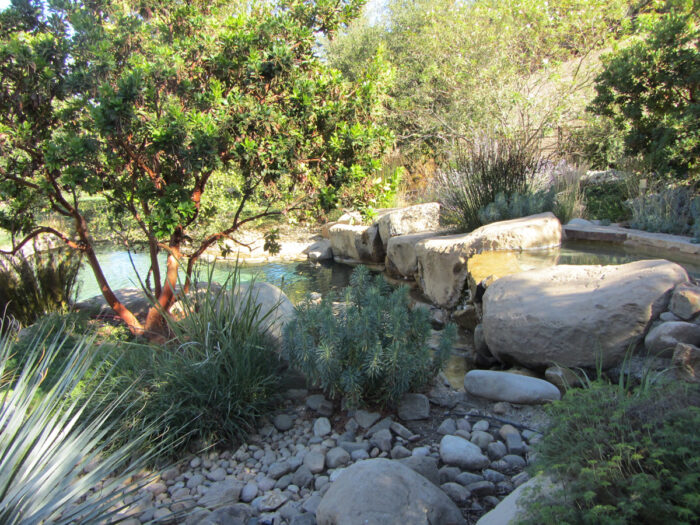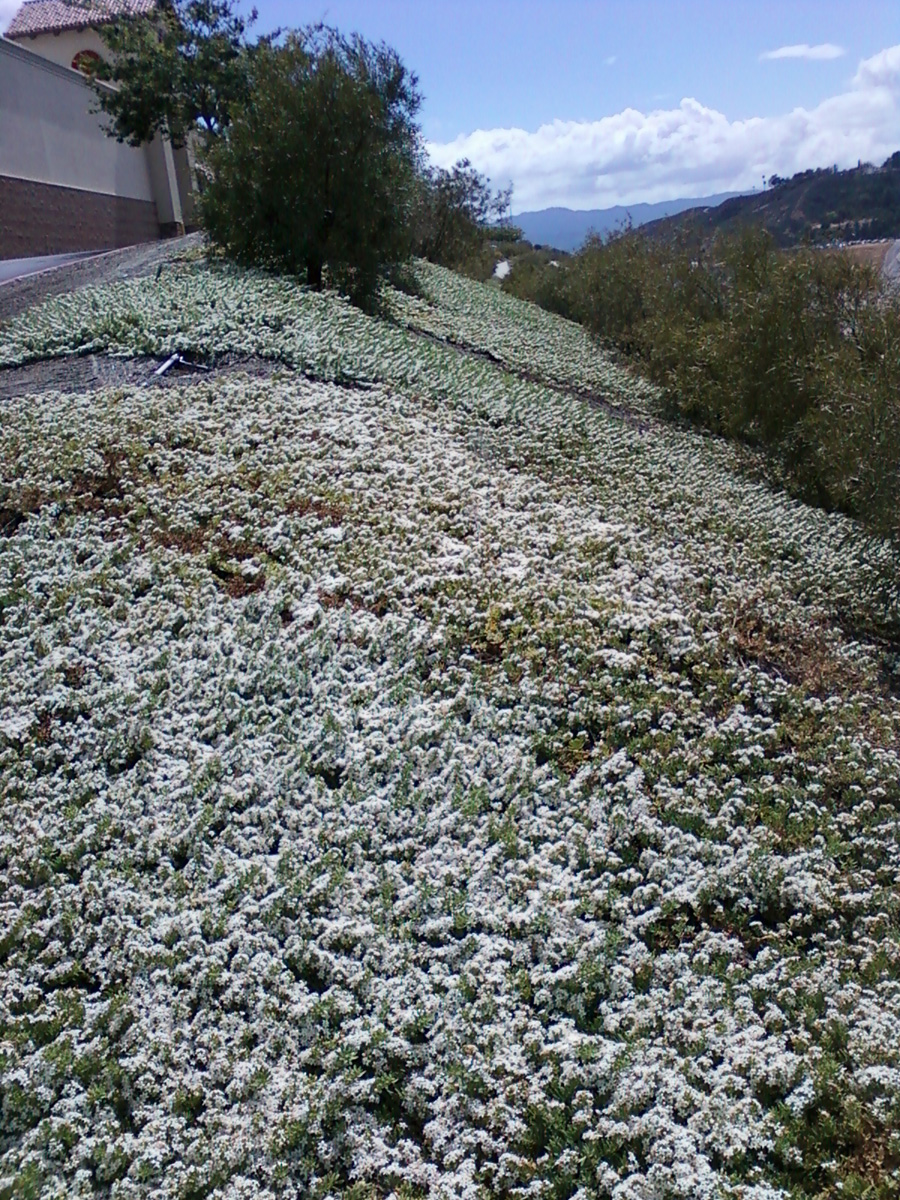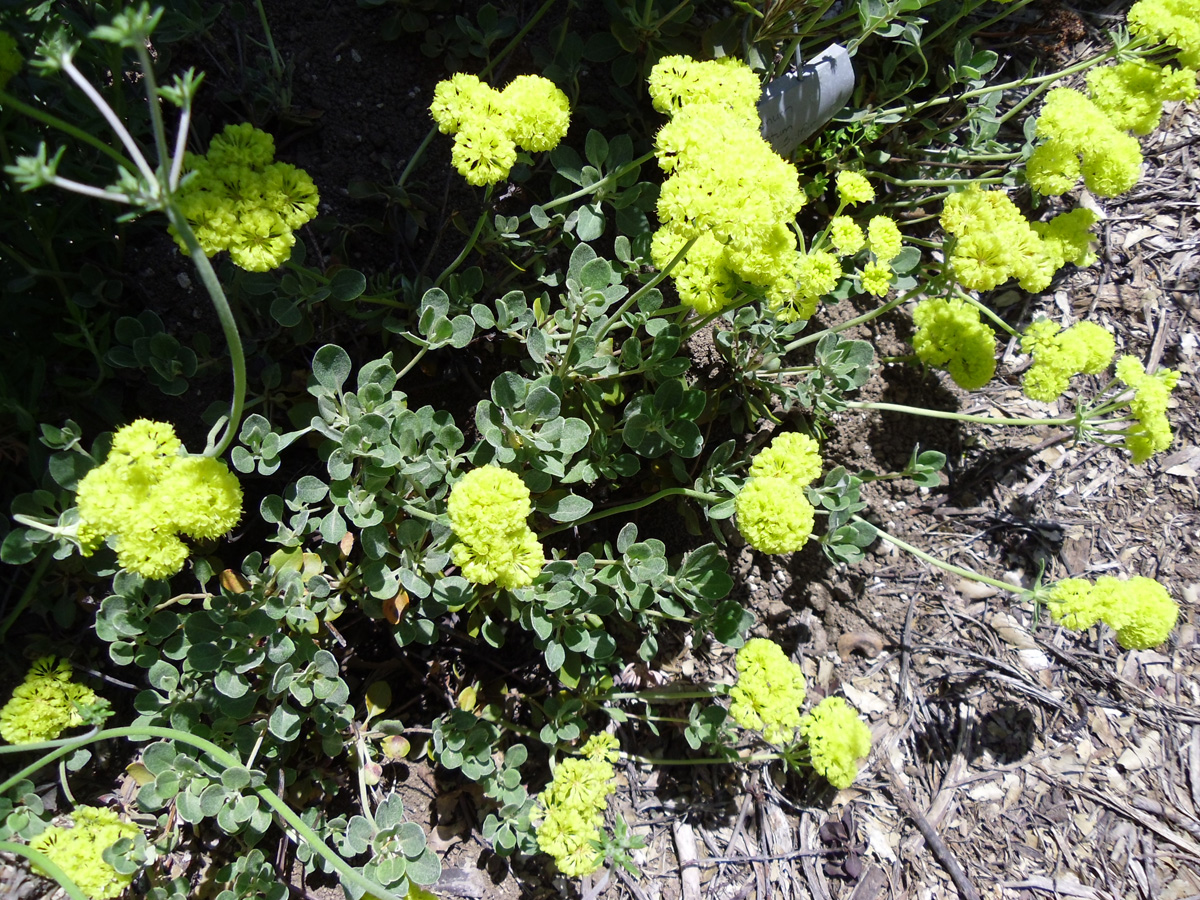
Once upon a time, the wildfire season in Southern California lasted for a couple of months in the autumn. Not anymore! Since these days wildfires can hit us at any time of the year, there’s no time better than now to clean up dead plants in your yard, add roads and paths for better access and firebreaks, and incorporate water reserves and additional fireproof materials to your landscape.
Your landscape is not just a convenient introduction to your home or a place to entertain. It is also the protector of your house and your surrounding shield from the unpredictable ravages of a drying and heating climate. But when it gets down to planting your landscape, which plants are really fire resistant and why? The best choices vary not only with individual tastes but with Southern California’s wide range of microclimates. Understanding why some plants will work better for your home will allow you to shop for the best fit no matter where you buy your plants.
Prepare your landscape for planting
First, realize that no garden is truly fireproof. A garden is a living thing. All living things on this planet can burn. But you can choose plants that, due to their natural attributes, are more fire resistant than others. Then you can place them into a fire-resistant design for maximum protection.
Prepare your landscape before planting your chosen plants with two fire basics in mind.
- Use mulch. It really is as good as the hype. It helps retain moisture at the roots of your plants, elevates humidity close to the ground, and is not likely to flame up in a fire.
- Believe it or not, weeds are the most flammable parts of our gardens, more than structures or even brush. Remove them!
Choose your plants
Next, you need to choose which plants to incorporate in your landscape. Here are some guidelines for choosing the most fire-resistant plants.

Size and habit
The smaller, lower, or less dense the plants, the less likely they will make good fuel for wildfire. Ground cover plants blanket the ground, offering little mass for a fire to grab onto. Try plants such as ‘Low Boy’ prostrate acacia (Acacia redolens ‘Low Boy’, Zones 9–11), Hearst’s ceanothus (Ceanothus hearstiorum, Zones 8–11), creeping myoporum (Myoporum parvifolium, Zones 9–11), or silver carpet (Dymondia margaretae, Zones 9–11). Spot in small annuals and perennials such as colorful ‘Pink Sugar’ African daisy (Arctotis ‘Pink Sugar’, Zones 9–11), low-growing wall germander (Teucrium chamaedrys, Zones 5–9), or any tiny-leafed thyme (Thymus spp. and cvs., Zones 4–9). Low growers can create a colorful firebreak between bulkier perennials and shrubs.

Water content
It’s no coincidence that most native plants from Southern California have small, hard, brittle leaves, often with a waxy coating. Their toughness protects the interior water content. Succulents evolved by adapting their leaves and stems for water storage. That makes them naturally more resistant to fire. They come in a variety of colors and sculptural forms.
The soft, large-leafed plants we love for creating lush designs are less ideal for coping with fire. But the water retention they offer means that they will take longer to ignite than drier, thin-leafed plants. Grow thirstier plants in gardens that can be regularly irrigated so they will be slower to burn, both because of higher humidity and higher water content.
Plant oils
Some plants are more flammable than others. For example, stay away from conifers if you are looking for a tall shade tree. Needles and resin are highly flammable.
Density matters
Most oak trees (Quercus spp. and cvs., Zones 4–10) resist fire due to their dense bark, which conducts heat poorly. Many of our native scrub shrubs have also evolved harder woody bodies to resist the wildfires that have historically been part of the Californian ecology. Smaller trees like the desert willow (Chilopsis linearis, Zones 7–11) or the evergreen strawberry tree (Arbutus unedo, Zones 7–10) offer less fuel with their open branches and shorter height, yet are decorative, well-behaved shade trees.

California natives
Native plants are simply superior when it comes to fire resistance. Even some of the larger natives, such as California lilac (Ceanothus spp. and cvs., Zones 7–10), when subjected to a direct flame test at the Las Pilitas Nursery in Santa Margarita, took longer than sixty seconds to ignite. Smaller California-native buckwheat (Eriogonum spp. and cvs., Zones 7–11) varieties also burned very slowly. Our native California sagebrush (Artemisa californica, Zones 7–9), despite its delicate, fluffy appearance, also ignited so unenthusiastically that researchers concluded it can actually help shield against wildfire’s spread.
Check out your own property to see what kinds of plants are likely to work for you. Then narrow down your choices by those that fill these fire-resistant criteria and will create the style of landscape you envision. For more tips on firewise landscape practices, read on here:
- Firewise Gardening in Southern California
- Firewise Plants for the Mountain West
- Firewise Landscaping for the Mountain West
- Firewise Landscaping in the Northwest
—Jane Gates is the owner of Gates & Croft Horticultural Design in Los Angeles and the author of All the Garden’s a Stage: Choosing the Best Performing Plants for a Sustainable Garden.
See more
Firescaping Plants That Help Protect Property from Fire
Recovering from Wildfire with Douglas Kent


















Comments
Log in or create an account to post a comment.
Sign up Log in